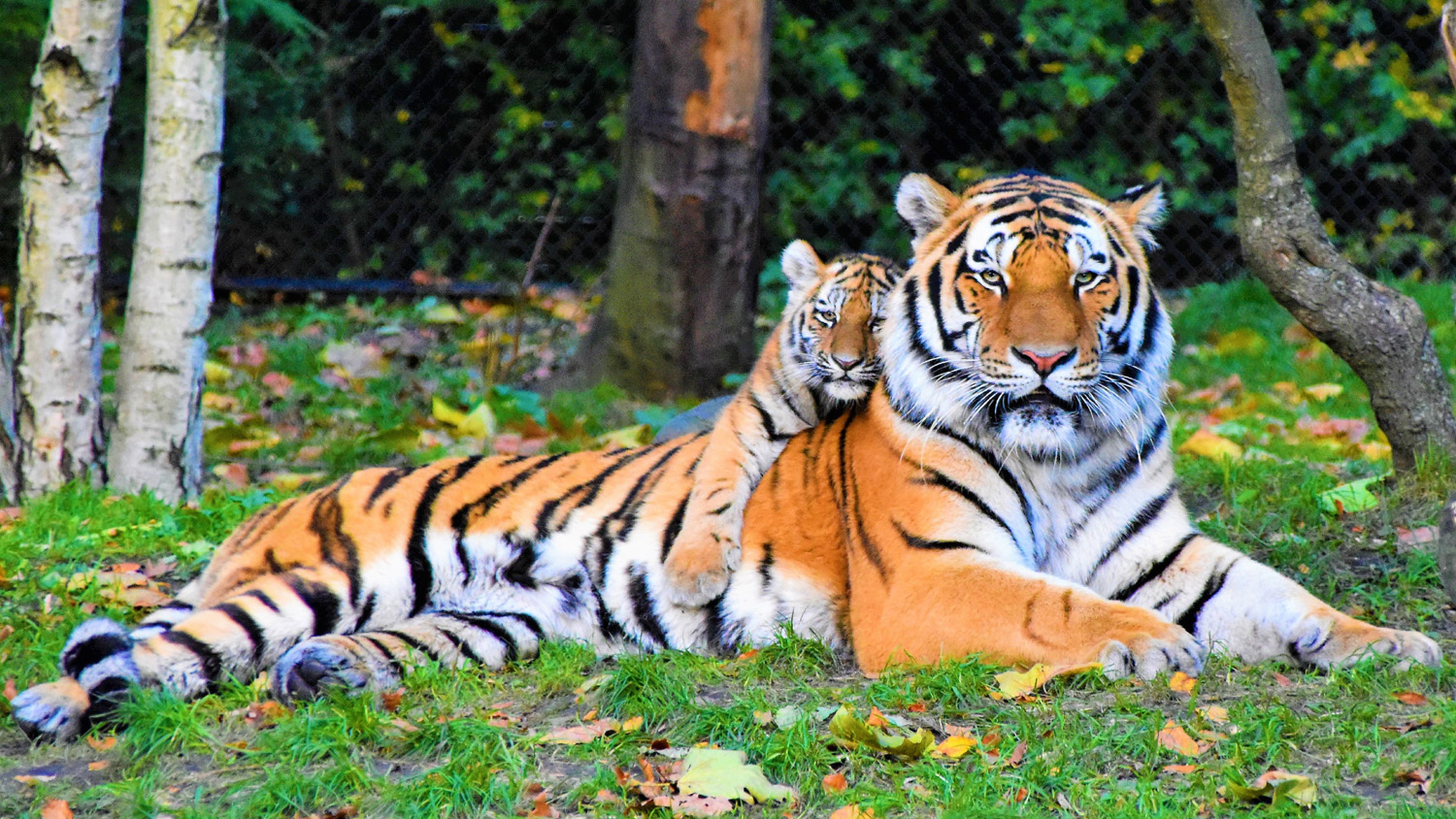
Today is World Tiger Day, which is celebrated on the 29th of July every year. On the 29th of July, the world celebrates World Tiger Day in order to conserve tigers’ natural habitats and to raise public awareness about tiger conservation. In St. Petersburg, the day began with the Tiger Migration of 2010.Human progress has systematically destroyed the habitat of these wild creatures. Tigers, on the other hand, play a vital role in maintaining the ecological equilibrium. Therefore, it is the responsibility of humans to safeguard wildlife. Knowing the significance of this day and its history
Although the day is observed all over the world, the day is celebrated with importance in 13 countries where the tiger population is high. The theme of the day is ‘Tiger will save”.
The name Tiger comes from the Greek word ‘tigris’ which originates from the Persian word and means arrow. Let’s find out some interesting and unknown facts about tigers.
The name of Tiger is derived from the Greek word ‘tigris’, which is derived from the Persian term and meaning arrow in Greek.

Discover a few intriguing and little-known tiger facts!
1. The pupil of a cat’s eye is like a long crack. But in the case of tigers the pupil is round.This is because tigers prey primarily in the morning and evening. Domestic cats, on the other hand, prefer to hunt at night.
2. Tigers mark their region through urine which cautions different tigers. However, curiously, the tiger’s urine smells like butter-coated popcorn.
3. Tigers seldom roar. Tigers roar to communicate with other tigers that are far away. The roar of the tiger may be heard from a distance of 3 kilometres throughout the night. When they become terrified, they start whistling like cats in a home.
4. Tigers are generous creatures. Male Tigers are generous. they feed on female tigers and cubs, which is contrary to the nature of lions and other cats.

5. As with human fingerprints, each tiger’s stripe is unique. Tigers have unique stripes. In other words, one tiger’s stripe is completely different from another.
6. The Chinese king’s mark may be seen on the tiger’s forehead. Exactly the same phrase is used in Chinese to engrave the word “king” on the brow of the tiger.
7. It’s no secret that tigers enjoy swimming. Most cats dislike water but tigers love water. On occasion, tigers are spotted playing in the water like babies, bathing in the water like adults, and even hunting in it.
8. Tigers are larger than any other types of cats, The Siberian tiger is the largest cat in the world. This tiger is 3.5 meters long and weighs 320 kg.
9. Tigers are blind from birth. Tiger cubs are entirely blind for the first week of their lives, and then they begin to see. Half of them grow up to become adults.

10. The tiger ambushes or hunts. The tiger likes to attack suddenly. So they ambush and actually jump near the prey. They rarely attack when trying to compromise with tigers. This is why in some parts of India, tiger masks are worn on the back of the head to ward off tiger attacks.
11. The tiger closes his eyes to express his happiness. Because they can’t rumble.
12. The tiger can run at full speed. A tiger can run at a speed of 60 kilometers per hour. But this is only possible for short distances.
13. Tigers can mimic the call of prey. The tiger imitates his call to attract prey. They do this with bears and often succeed.
14. Tiger saliva contains antiseptic. The tiger puts saliva on the wounds of its body which not only cleans but also prevents infection.
15. 3 tiger species have gone extinct in the past 60 years. Bali Tiger, Java Tiger and Caspian Tiger are three different species of same genus.
16. The average life expectancy of a tiger in captivity or in the wild is 25 years.

17. There are around 3500 tigers in the wild. In America, there are more tigers in captivity than in the wild. In the Sundarbans, Bangladesh and India have the most tigers.
18. An ambush is a gathering of tigers. It is also termed a streak when there is more than one Tiger in it.
19 The tiger’s legs are so strong that it can stand up even after death.
20 The white spot on the back of the tiger’s ear is called oseli.
21. Tigers live in a lonely state. In the wild, they are quite unusual to come upon.
22. In general, the eyes of tigers are yellow in colour. The white tiger’s eyes, on the other hand, are blue.
23, The brain of a tiger weighs more than 300 grams and is enormous in size The tiger has an extremely excellent memory. Tigers, for example, have a short-term memory that is 30 times greater than that of humans.

24. tiger may consume 30 kg of food every day. Buffalo, deer, and wild boar are the most common predators.
25. If a tiger does not eat for two to three weeks, it will die.
26. Tigers give birth to 2-6 cubs at a time and they have a gestation period of 105 days.
27. Male tigers move lonely, without tigers and cubs. They like to travel around huge places.
28. They have sharp claws in their claws, strong legs and huge teeth and jaws.

Causes for Declining numbers of tiger:A century ago, about 100,000 tigers roamed the forests from Turkey to China. But now their numbers have reduced to great extent. All three of the nine species of tigers are now extinct. The Java tiger, which is already extinct. Losing habitat is a major cause. Tigers have lost 93 percent of their habitat due to urbanization and increasing human dependence on agricultural land. Due to climate change, the sea level is rising. As a result, the tiger’s habitat is being lost.Although almost all countries in the world have enacted laws banning products made from tiger skin, bones and limbs, tiger skins are still being smuggled and sold on the black market. Tigers and
Tigers” Can Prey:
Tiger’s prey animals, such as deer, wild buffalo, sambar, pigs, etc,. are being secretly killed and trafficked. Heavy industries, factories, roads, settlements, markets, etc. are being formed by destroying tiger-rich forests. Tiger limbs are still a huge market in China for traditional medicine, shampoos and tonics. If this market does not reduce demand, tiger conservation will be plunged into further crisis.

Reasons for hunting the Tigers:
Tiger experts have blamed the following factors for the decline in tiger numbers around the world.
1. Tiger hunting and trafficking of carcasses (skin, bones, etc.);“
2. Construction of roads, extraction of minerals, forcible occupation, establishment of settlements and markets by destroying tiger-rich forests;
3. Environmental pollution by setting up factories in and around tiger habitats;
4. Use of traps, baits, etc. for hunting and killing tigers;
5. Extermination of tiger prey. One of the main reason is shortage of food.
6. The tiger-man conflict escalated and
7. Increase traffic and navigation through tiger-rich forests.

Number of tiger:At the 2010 World Tiger Conference in St. Petersburg, Russia, there was an announcement to double the number of tigers. But only India, Russia, Nepal and Bhutan have been partially able to achieve that goal. The number of tigers has increased in the 4 countries mentioned in the 2015 survey. For example, India 1706 to 2226, Russia 306 to 443, Nepal 121 to 198 and Bhutan 75 to 103. Below is a survey of other countries:
A 2015 survey by the IUCN (International Union for Conservation of Nature and Natural Resources) and the WWF (World Wildlife Fund) found no tigers in Cambodia. The number of tigers in Bangladesh was come down from 440 to 103, in China from 45 to 6, in Laos from 18 to 2, in Indonesia from 500 to 361, in Malaysia from 500 to 250, in Thailand from 252 to 179 and in Vietnam from 20 to 5. No updated data from the Myanmar Tiger Survey was available.

Reason to save the tiger :Tiger habitats share space with internationally significant ecosystems, including several of Asia’s remaining wildness. On a daily basis, millions of people depend on commodities and services provided by these richly vegetated and animal-populated places. In addition to helping to mitigate climate change, healthy tiger habitats also offer fresh water to animals and humans, decrease the effect of natural catastrophes, and promote the health of local people in their own communities. In a recent WWF research, these often-overlooked advantages of conserving tigers and their habitats are detailed.
There are different species of tigers in 13 countries of the world. We say, if the tiger survives, the forest will survive. Why? The tiger is the constant guard of the forest. Where there are tigers, people do not go. In other words, there is no chance of forest damage if people do not go. As a result, the forest is protected.

To the world we will face the question that such an animal has been lost from our country? It would be a great shame for us. The issue of alternative livelihoods of forest dependent people is very important. Without tigers, other forest animals and plants would be endangered. Biodiversity will be destroyed. So we need to think more deeply about how important tiger conservation is. Protecting the environment of children in families and educational institutions should be explained.
Precaution measures for saving the tiger :Take the following actions to save the tiger:
Disseminate the news:
Tell others that the tiger and its habitat are in danger and that we must do something to save them and their environment. Tiger conservation may be discussed and debated in online forums (or by joining already existing ones).

Be a responsible tourist:
Wilderness is meant to be enjoyed, not disturbed or contaminated. Be sure to follow the forest department’s rules and regulations when visiting any wilderness region, and in particular, a tiger reserve. As the adage goes, “Leave nothing but footprints behind, and take nothing but memories with you.”
Voice your concerns with the policy makers:
The Prime Minister, the Minister for the Environment and Forests, or even your local Member of Parliament should be contacted if you are truly concerned and believe that more needs to be done to protect the tiger.
Help prevent wildlife trade:
Repudiate the Tiger Trade by refusing to purchase tiger parts and goods produced from tiger derivatives. Convince tiger and wild unicorn poachers to stop poaching. Information on poaching or illicit wildlife trading should be reported to local law enforcement officials. Information on poachers can also be passed on to the TRAFFIC organization, which is dedicated to combating the powerful poachers.
Reducing pressure on natural resources:
particular, through limiting the usage of forest-derived goods such as wood and paper
